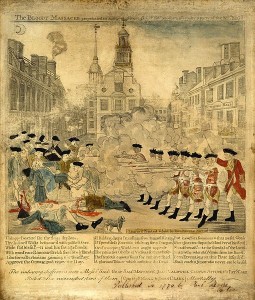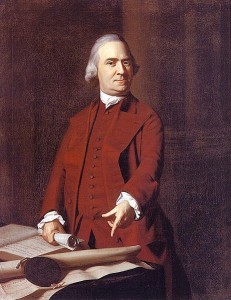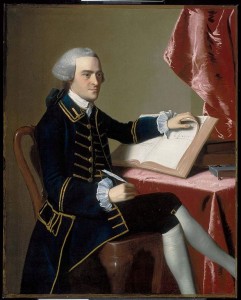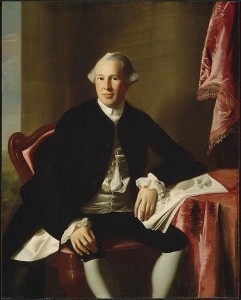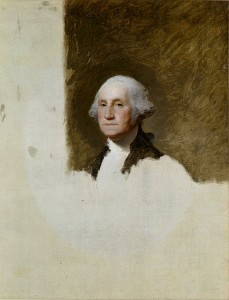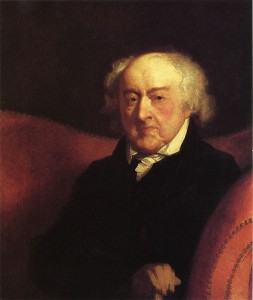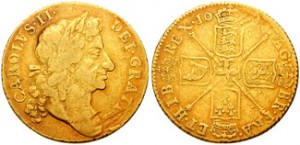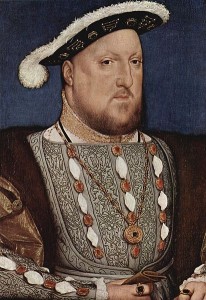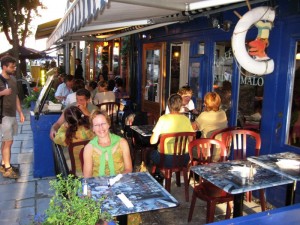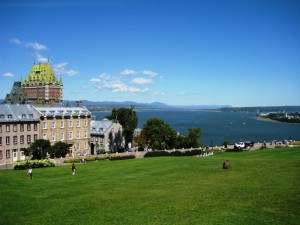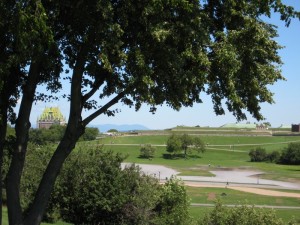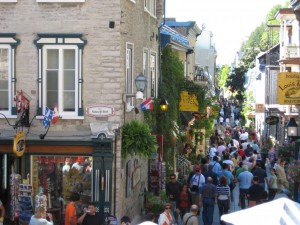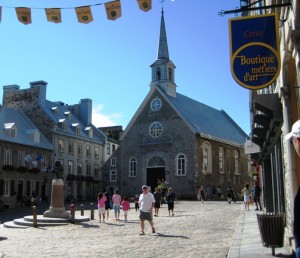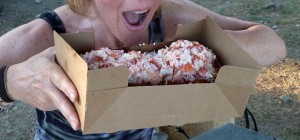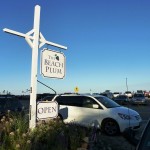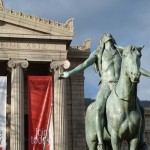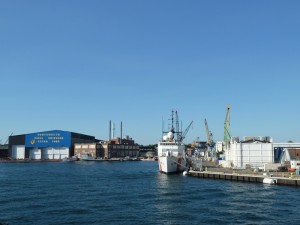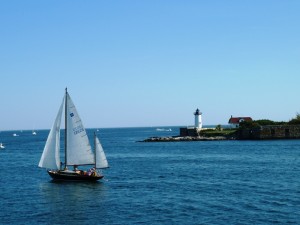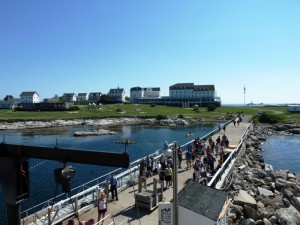The Boston Museum of Fine Arts is awesome, and it’s the only place you can see some of the most influential leaders of the American Revolution up close and personal. John Singleton Copley’s vivid and compelling portraits of Paul Revere, Sam Adams, John Hancock and Joseph Warren are intimate and perceptive. Gilbert Stuart’s works of George Washington are superb, and you can even see the original portrait used as the model for the U.S. one dollar bill. This is as close as you can get to shaking hands with these leaders of the American Revolution today.
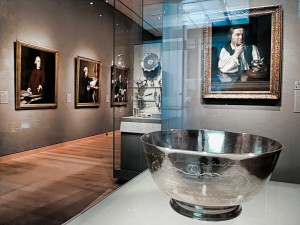
Revere’s Sons of Liberty Bowl with Copley’s Portraits of Revere, Samuel Adams, John Hancock, & Dr. Warren
Located on the first floor of the MFA’s Art of the America’s Wing, the first thing you meet upon entering the gallery is Paul Revere’s 1768 “Son’s of Liberty Bowl.” The silver bowl was commissioned by fifteen members of the Sons of Liberty to honor the Massachusetts House of Representatives for standing up to the British after the Townshend Acts in 1767. The chain of events set off by the Townshend Acts, and the troops Britain sent to quell the associated Colonial turbulence, was to lead inexorably to the Boston Massacre in 1770 then on to the American Revolution.
The Townshend Acts taxed imported commodities, including paper, glass and tea. The Massachusetts House of Representatives sent a “Circular Letter” to other colonies asking for their support to protest the Acts – which resulted in boycotts of British goods by Royal colonies. In Boston, resistance was so intense that British custom officials requested military assistance. After the HMS Rodney, a 50-gun warship, arrived in Boston harbor, the Colonials rioted and Britain sent 4 regiments of troops to restore order. The presence of the troops led directly to the Boston Massacre.
Directly behind the bowl is Copley’s 1768 portrait of Paul Revere, painted when Revere was thirty three years old. The portrait was unusual for the period, as it shows Revere without the traditional gentleman’s coat and wig. (Revere’s family thought it made him look like a workman and actually hid it in the attic.) The portrait works on many levels, both as a discerning picture of Revere and as a political statement. Note Revere’s flaunting display of flowing linen shirtsleeves – the linen was manufactured in Boston in direct defiance of British laws. Flanking the portrait are two cases of Revere’s silver – incredible works of art on their own.
On the wall to the left of Revere’s portrait you will find four important Revolutionary works, one an engraving and three Copley portraits of Boston revolutionaries. The engraving is Paul Revere’s highly sensationalized depiction of the March 1770 Boston Massacre. The Massacre took place after an unfortunate chain of events led British soldiers to fire on an angry Boston mob, killing five and wounding six. Although hardly a massacre (most of the soldiers were later acquitted of blame) it was to be an important event provoking colonial unrest. The famous engraving you see was a key piece of Patriot propaganda used to help move America closer to its break with Great Britain.
Next is the 1772 portrait of Samuel Adams. Adams is shown defiantly pointing to a petition from angry Boston citizens after the Boston Massacre. The portrait was commissioned by John Hancock to hang in his Beacon Street mansion which was located at the southwest corner of the current Massachusetts State House site.
Next is John Hancock himself, painted in 1765 when he was twenty-eight. Hancock is best known for his flamboyant signature on the Declaration of Independence, and he was a multidimensional architect of the Revolution. A successful merchant, he was one of the richest people in America and personally funded much of the Boston-based dissension. He was president of the Massachusetts Provincial Congress (the Patriot shadow government that was formed after the Boston Tea Party in 1774), the second Continental Congress, which created the Declaration of Independence, and later served as the first Governor of the State of Massachusetts.
Further down the wall is the sensitive portrait of Dr. Joseph Warren at the age of twenty-four, also painted around 1765. Warren was one of the most influential Patriot leaders, and served as President of both the Massachusetts Committee of Safety and the Provincial Congress. After the April 1775 Battles of Lexington and Concord, he strongly advocated going to war with Britain. Even though he had limited military experience, he was appointed a major general. He died fighting as a private during the Battle of Bunker Hill on June 17, 1775. John Trumbull’s painting “The Death of General Warren at the Battle of Bunker’s Hill” is shown elsewhere in the exhibit.
The exhibition features a number of other Revolutionary-themed works including Copley’s 1796 portrait of John Quincy Adams, the son of John Adams and the sixth President of the United States, and John-Antoine Houdon’s 1789 portrait of Thomas Jefferson.
The next exhibit room features some monumental works by Gilbert Stewart, including the 1796 unfinished portrait of George Washington, known as “The Athenaeum Portrait.” This painting was used as a model for more than fifty other works, including the image on the U.S. one dollar bill. Also displayed are Stuart’s portrait of Martha Washington and his idealized 1806 painting of Washington at Dorchester Heights.
Other Revolutionary works in the same exhibit include Thomas Sully’s 1819 huge painting “The Passage of the Delaware” and Gilbert Stuart’s 1805 painting of General Henry Knox. General Knox led the expedition that brought the cannons used to lift the Siege of Boston. He then became chief artillery officer of the Continental Army and later Washington’s Secretary of War. Stuart’s 1823 portrait of John Adams, ninety at the time of the painting, rounds out the exhibit. Look into Adams’ tired, sensitive eyes.
In all, the five rooms of this gallery contain a treasure of colonial furniture as well as many other important paintings from the 18th and early 19th century colonial America. Visit and enjoy, whether you are a Revolutionary War enthusiast or not.
Photos of Paul Revere Bowl and Gallery Entrance showing Paul Revere and other Copley portraits, stevestravelguide.com – all rights reserved.
Other pictures from Wikimedia Commons – these works are considered public domain in the United States, and those countries with a copyright term of the life of the author plus 100 years or fewer.
